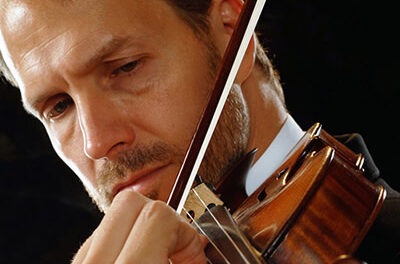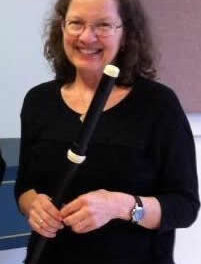Duke Performances presented Eliot Fisk (guitar) who joined the Ciompi Quartet for their festive opening night concert in the Nelson Music Room on the East campus of Duke University. The program featured works by Joseph Haydn (1732-1809), Ludwig van Beethoven (1770-1827) and Mario Castelnuovo-Tedesco (1895-1968). The house was packed.
The Ciompi Quartet opened the concert with a favorite of the classical quartet repertoire, Haydn’s String Quartet in C, Op. 76, No. 3, “Emperor” (1797). Nicknamed for the material he borrowed from a previous commission, the anthem for Emperor Franz Joseph II, the composition is a gem. And C.Q.’s performance was exceptional.
Eliot Fisk joined C.Q. for Mario Castelnuovo-Tedesco’s lush Quintet, Op. 143. A romantic at heart, Castelnuovo-Tedesco seems to have one foot in the 19th century as he says, “. .it [the quintet] is written almost in a Schubertian vein . . .” (liner notes by Graham Wade, Segovia: the great masters, Deutsche Grammophon, 1956). Scholars agree that his more than 100 exemplary romantic guitar works became the template for 20th century composers. The quintet is dedicated to Andrés Segovia who influenced Castelnuovo-Tedesco’s writing and became a life-long friend. For Eliot Fisk, who became acquainted with the composition as a young boy, the piece was an obvious choice.
Beginning with a unified punch, the quintet holds a treasure trove of musical riches: concerto-like solo passages for the guitar, tutti and contrapuntal passages. Lots of seventh chords, and the folk idiom of flamenco-style strumming helped create the allusion of a colorful dance. In the final movement, cross rhythms suggest an Andalusian heritage. Castelnuovo-Tedesco exploited performance techniques as well; with mutes in the second movement (Andante mesto) and artificial harmonics in the scherzo (Allegro con spirito, alla Marcia). The last movement calls for col legno (tapping with the wood part of the bow).
Fisk enchanted the audience. His visual focus and fluent gestures commanded our attention. And like a dancer, he made it look so easy. The quartet played different roles; in the foreground (much of the first movement) and at others, in the background while adopting guitar-like pizzicato (last movement). The score is filled with expressive markings. My favorite, in the last movement reads dolce e semplice (come una canzone popolare); loosely translated, “sweetly and simply, like a popular song.” The ensemble played the piece with finesse and the audience rewarded them with a hardy applause. For some, this was a first listening; a gentleman near me noted how accessible it was. Clearly the five players enjoyed the challenge. Mr. Fisk smiled as he reached out to his fellow musicians.
The Ciompi Quartet finished the program with Beethoven’s String Quartet Op. 59, No. 1 “Rasumovsky.” Infused with the composer’s stormy personality, this middle quartet is loaded with contrasts in tempo, sudden dynamic changes and with a wide range of tessitura. And though twenty-first century listeners might not notice that Beethoven did not repeat the exposition, this probably raised a few eyebrows in 1808. Breaking out of the classical format, this was only the beginning. And regarding tonal ambiguity in the last movement, Fred Raimi wrote in the program notes ” . . .the working out of which will take the composer on a long musical journey.” It was an uncommon performance; for Beethoven fans it was breathtaking.
There were wonderful moments throughout the evening. Raimi drew beautiful long lines rendering a glorious burnished tone from the cello. He was especially animated in the Beethoven, starting with the opening theme of the first movement. Hsiao-mei Ku, played with great warmth, complementing Eric Pritchard’s jewel-toned passages in the stratosphere. Pritchard played with fire and precision.
Leaving the hall and humming a melody from the “Rasumovsky,” the rainy night seemed just right.












